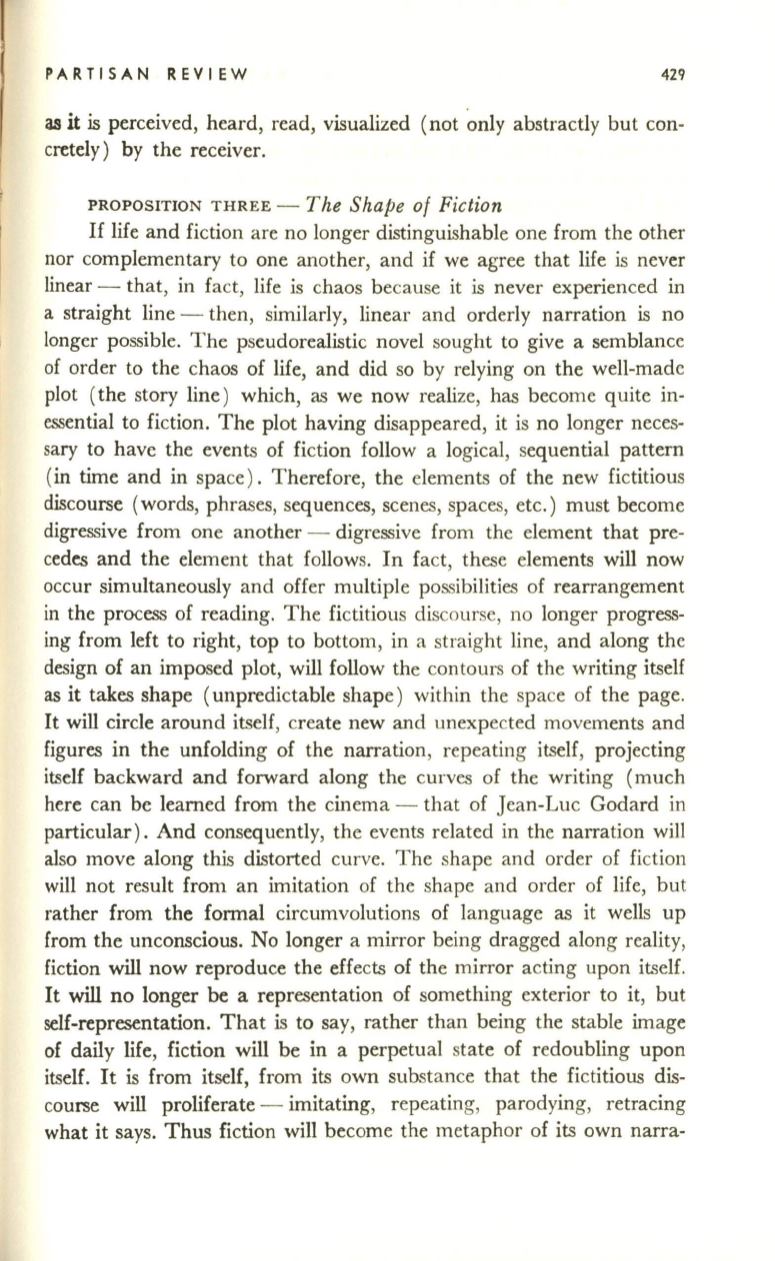
PARTISAN REVIEW
429
as
it
is perceived, heard, read, visualized (not only abstractly but con–
cretely) by the receiver.
PROPOSITION THREE -
The Shape of Fiction
If
life and fiction are no longer distinguishable
one
from the other
nor complementary to one another, and if
we
agree that life is never
linear - that, in fact, life is chaos because it is never experienced in
a straight line - then, similarly, linear and orderly narration is no
longer possible. The pseudorealistic novel sought to give a semblance
of order to the chaos of life, and did so by relying on the well-made
plot (the story line ) which, as
we
now realize, has become quite in–
essential to fiction. The plot having disappeared, it is no longer neces–
sary to have the events of fiction follow a logical, sequential pattern
(in time and in space) . Therefore, the elements of the new fictitious
discourse (words, phrases, sequences, scenes, spaces, etc.) must become
digressive from one another - digressive from the element that pre–
cedes and the element that follows. In fact, these elements will now
occur simultaneously and offer multiple possibilities of rearrangement
in the process of reading. The fictitious discourse, no longer progress–
ing from left to right, top to bottom, in a straight line, and along the
design of an imposed plot, will follow the contours of the writing itself
as it takes shape (unpredictable shape ) within the space of the page.
It will circle around itself, create new and unexpected movements and
figures in the unfolding of the narration, repeating itself, projecting
itself backward and forward along the curves of the writing (much
here can be learned from the cinema - that of Jean-Luc Godard in
particular). And consequently, the events related in the narration will
also
move
along this distorted curve. The shape and order of fiction
will not result from an imitation of the shape and order of life, but
rather from the formal circumvolutions of language as it wells up
from the unconscious. No longer a mirror being dragged along reality,
fiction will now reproduce the effects of the mirror acting upon itself.
It
will
no longer be a representation of something exterior to it, but
self-representation. That is to say, rather than being the stable image
of daily life, fiction will be in a perpetual state of redoubling upon
itself. It is from itself, from its own substance that the fictitious dis–
course will proliferate - imitating, repeating, parodying, retracing
what it says. Thus fiction will become the metaphor of its own narra-


